#ted2017
Text
Hagamos nuestro plan de Vida
¡Hola! Te saluda tu amiga Antonella Vásquez, de 17 años. En este post quiero hablarles de un nuevo tema: El plan de Vida. Sabemos que estamos apunto de acabar el colegio y emprender una aventura un tanto desconocida, pero el que sea incierta no quita el hecho de tener nuestros objetivos o ideales bien definidos. Por ello, hoy en Vistazo al futuro te traemos: ¡Hagamos nuestro plan de vida!
Alguna vez has escuchado la frase: “El que no sabe para donde va, cualquier bus le sirve”

Por mi parte, la habré escuchado un par de veces, pero no tenía significado para mí hasta que llegué a este punto de mi vida. Cuando despiertas y te encuentras con la realidad de que la burbuja que te protegía del “mundo adulto” está a punto de romperse, entonces, es que empiezas a reflexionar. Esto me pasó a mí, por eso, interioricé al respecto y me di cuenta de lo que me quería decir esta frase: es importante tener claro lo que quiero hacer con mi vida.
Era momento de darle foco al famoso plan de vida. Al comienzo me costaba un poco hacerlo, pero una vez inicié, descubrí que me estaba perdiendo de muchas cosas, solo por el simple hecho de no haberme tomado el tiempo de pensarlo y escribirlo antes. Y como en este maravilloso blog no queremos que eso te pase, a continuación, te daremos 4 pasos y algunos tips para comenzar a hacer tu propio plan de vida. Manos a la obra 😊
Recomendación: lo que no se escribe no existe, por eso, escribe en una hoja de papel cada uno de los puntos, así tu mente no lo olvidará y podrás hacerle seguimiento a tu plan de vida.
1° Define tu sueño
Todo empieza por tus sueños. Permítete pensar y definir lo que quieres hacer en el futuro. Es importante tener claro como queremos actuar en la vida, para hacer las cosas de acuerdo a nuestros valores y principios. Empieza preguntándote ¿Qué legado quiero dejar? (misión), ¿qué historia quiero que cuenten de mí? (visión) ¿Con qué me siento a gusto? (encuentra tus pasiones y con lo que te sientes cómodo).
“Estamos en la vida para amar, servir y ser felices” parte de este principio para encontrarte y saber a qué meta quieres llegar.
2° Analiza tu vida
Analiza a conciencia las variables externas, o sea, aquellas cosas que intervienen en tu vida que no puedes controlas; por ejemplo, el contorno económico, familiar, etc. Al identificar esos factores, realiza una conclusión y tómalas como oportunidades o amenazas. Ahora analiza las variables internas (las cuales puedes controlar) tus habilidades, educación, etc. y conviértelas en tus fortalezas.
Una vez reconocido ello, sabrás las adversidades que puede haber y podrás prepararte para afrontarlas.
3° Define tus objetivos
Nuestro sueño trazado es uno de nuestros objetivos, pero es uno a largo plazo. Busca objetivos mas cortos, de esos que poco a poco vallan construyendo una escalera para alcanzar la meta final. Uno, por ejemplo, puede ser: acabar exitosamente la secundaria. Ese objetivo alcanzado “desbloquearía” una siguiente etapa. Escribe y haz acciones concretas que te ayuden a seguir adelante. Todo se puede con mucha perseverancia.
4° Hazle seguimiento
Siempre ve revisando tus objetivos, anímate e intenta no desviarte de ellos, cuando veas que vas avanzando es buena señal. Cada vez estas mas cerca, pero no te apresures, es mejor ir con calma. Recuerda que esto no es una tarea del colegio, el proceso no debe ser aburrido, tu mismo define tu ritmo, pues a final de cuentas llegarás tan lejos como tú quieras.
Estoy segura que este video de te puede ser de utilidad:
youtube
Fuente: TED2017, Emily Esfahani Smith. There’s more to life than being happy. De https://www.ted.com
Bien, ahora ya sabes que camino tomar para empezar a armar tu plan de vida así que... ¿qué esperas? Comienza ahora y descubre qué es lo que quieres lograr para tu vida. Ánimo y buena suerte.
.
.
.
Proto seguiremos con este bonito tema, manténgase conectados.
¡Cambio y fuera!
Escrito por ANTONELLA VÁSQUEZ - 5H
4 notes
·
View notes
Text
You're going to feel like hell if you wake up someday and you never wrote the stuff that is tugging on the sleeves of your heart
That's also why you were born - Anne Lamont - TED2017
#writerblr#writers on tumblr#writer struggles#writerscorner#writers#inspiration#the idea that your story is your young child
0 notes
Text
"Strive for Greatness? Secure a Coach!" – insights from a TED2017 talk by Atul Gawande.
I initially stumbled upon this illuminating video presentation (“Strive for Greatness? Secure a Coach!” – insights from a TED2017 talk by Atul Gawande), boasting an impressive 3,885,469 views on YouTube, in a LinkedIn post by Patrick Schoof, a highly-regarded Executive Coach and LinkedIn’s™ ‘Best Executive Coach’ | Career Advisor | Speaker. After digesting the contents of the video, here’s my…
View On WordPress
0 notes
Text
Rotoscoping 101 with TED-Ed animators
Rotoscoping is, in essence, a technique that goes back to the early days of cinema, when animators would trace live action footage projected frame-by-frame onto paper, either to use as motion reference or directly copy into their work. Here are two of our favorite examples:
L’Eau Life (Jeff Scher, 2007)
Milk of Amnesia (Jeff Scher, 1992)
At TED2017, the TED-Ed animation team taught attendees how to make rotoscoped animation, using the TED Talk intro sequence as our inspiration. Attendees used paint, clay, whiteboards, coffee grinds, map tacks, paper, and yarn to reimagine the TED logo. For software, we used iStopMotion. Here’s the end result:
youtube
How we developed this animation workshop: Our challenge was to come up with something that would allow people to experiment and have fun within a short time frame, but still wind up with some sort of coherent end product. Thinking about past examples of this sort of undertaking, the animated MTV logo came to mind. Throughout the 1980s and 90s, a dense roster of animators and filmmakers created 30-second promotional bumpers for the network, using a countless variety of approaches and techniques, all riffing off of and landing on the iconic MTV logo at the end of each visual romp.
Taking inspiration from this era of experimental popular culture, we thought it would be fun to have workshop participants remix the 10-second TED intro title sequence animation, using a variety of materials and frame-by-frame animation techniques on tabletop stop-motion setups. And in order to maximize the time we had with people, many of whom likely had very little prior experience with animation, we decided to have them rotoscope the TED intro. For our purposes, we had the TED intro sequence pre-loaded into the stop-motion software we were using to capture frames. This enabled us to superimpose the sequence over the camera feed on the screen as participants animated, so they could visually refer to it frame-by-frame as they went. We prepared a short reel of examples of work created with the techniques and materials we were about to employ, and then turned our participants loose, encouraging them to experiment and diverge from the reference material if they so desired.
Here are a few of the methods, materials, and references we shared:
Clay: The Creation (Will Vinton, 1981))
Whiteboard: Drive: The Surprising Truth About What Motivates Us (Andrew Park, 2010)
Coffee Grinds (similar to sand): The Owl Who Married A Goose (Caroline Leaf, 1974)
Object: Game Over (PES, 2008)
Oil Paint on Glass: Retouches (Georges Schwizgebel, 2008)
To learn more, watch TED-Ed’s series of videos on ed.ted.com called ‘Animation Basics’. Some of these are behind the scenes on our animated lessons, and others are meant for first time animators. All of them are filled with animation #protips! We especially recommend: TED-Ed animators explain timing and spacing, and TED-Ed animators explain how to make pixilation animation, or ‘homemade special effects’. Happy animating!
68 notes
·
View notes
Video
#shahrukhkhan #shahrukh #srk #shah_rukh_khan #shahrukh_khan #iamsrk #kingkhan #vancouver #ted2017 #lungidance
#srk#vancouver#ted2017#shah_rukh_khan#shahrukh_khan#iamsrk#lungidance#shahrukhkhan#shahrukh#kingkhan
3 notes
·
View notes
Text
To ted’s vast hall of uplifted, eager faces, and to its dispersed multitude of screen-watchers, the Pope could not have been more frank. “Please, allow me to say it loud and clear: the more powerful you are, the more your actions will have an impact on people, the more responsible you are to act humbly,” he told them. “If you don’t, your power will ruin you, and you will ruin the other.” - Pope Francis
1 note
·
View note
Photo
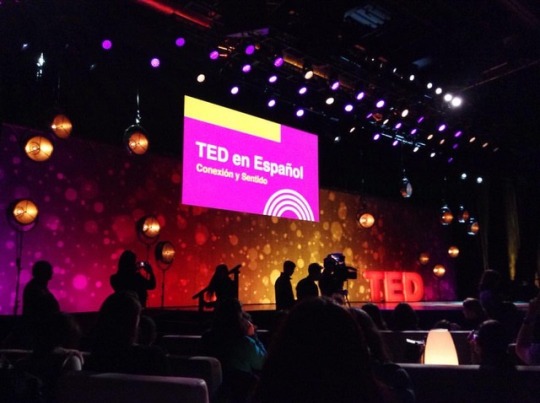
Sublime ✨ #tedenespañol #ted2017 #tedtalks
1 note
·
View note
Photo
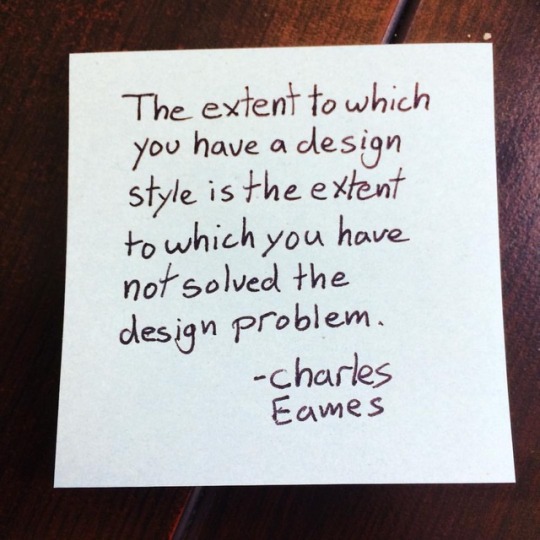
As heard on an old @ted talk by Charles and Ray Eames' grandson #QOTD #design #ted2017 #inspiration
1 note
·
View note
Quote
If people wanted you to write more warmly about them, they should've behaved better.
12 Truths I Learned from Life and Writing
TED2017
Anne Lamott
2 notes
·
View notes
Photo
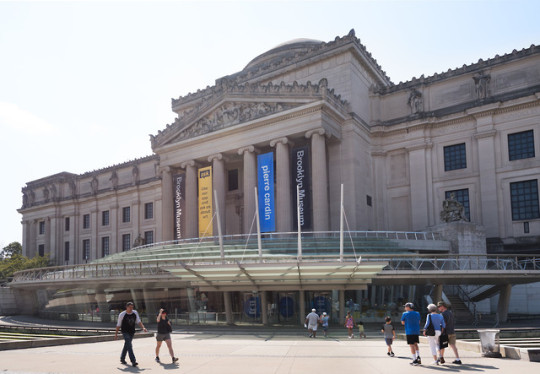
A Call for Cultural Courage
Dear Friends,
On opening night of the TED2017 conference, just before headliner Pope Francis took the spotlight, artist Titus Kaphar walked to center stage declaring, "I love museums." Standing in front of a large-scale replica of Dutch master Frans Hals’s seventeenth-century painting entitled Family Group in a Landscape, which depicts a European family and a Black servant set against a country landscape, Kaphar began his talk with a story. It went like this: While Kaphar and his two young sons were on an outing to the American Museum of Natural History, the boys were confronted with the 1939 Equestrian Statue of Theodore Roosevelt outside the museum’s entrance. The sculpture depicts Roosevelt on a horse flanked by two men, one Native American and one of African descent. The boys questioned why one man got to ride the horse while the others had to walk. To the children, this seemed unfair. For Kaphar, it was a seminal moment that stopped him in his tracks—the question reminded him of the portrayals of white-dominated hierarchies that pervade our culture.
Kaphar then posed a question for the TED2017 audience: “Can art amend history?” As he asked the question, he dipped a wide household paintbrush in white paint and began to cover his own painting until all the figures, except the young Black boy in the background, were obscured. The audience collectively gasped as Kaphar forced them to consider the focus of their gaze—and whose histories are seen or made invisible. Kaphar concluded his talk by sharing his desire to create art that "wrestles with the struggles of our past" and, in the process, models how art can contribute to shaping history.
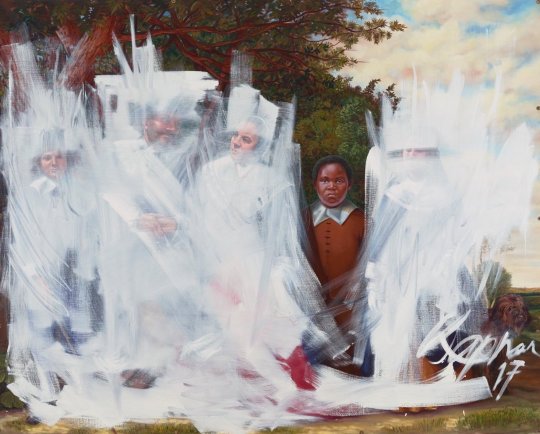
If artists and art can wrestle with the past and amend history, so too can museums. And we must. Museums like the Brooklyn Museum were founded on the fundamental belief that the sharing of world cultures would lead to greater understanding and empathy, thereby advancing civilization. Many of us in the museum field still value this glorious ideal. However, we recognize that museums have also privileged Western white narratives while often diminishing the histories of others. This is important to understand because, for better or worse, museums contribute to the narratives that shape our society, and our society is in great need of more empathy and respect.
At this time of social unrest, people around the globe are using protest to call upon their museums to do better. We can debate the accuracy of information and the effectiveness of the strategy, but like it or not, we shouldn't be surprised by protest. As the President of the Ford Foundation, Darren Walker, recently shared museums are in crisis because America is in crisis. In his recent op-ed in The New York Times, Walker urged museums to do better. Why? Because museums are fundamental pillars of our American democracy and among the few truly public spaces for people to come together, learn, share ideas, and debate; because art has the capacity to inspire empathy; and because people count on museums to confront difficult and important issues with understanding and respect.
So how are we at the Brooklyn Museum striving to do better?
Lots of ways.
First, doing better means understanding that the stories we tell matter. We have therefore made it an institutional priority to present special exhibitions that shine a spotlight on cultural histories that have long been suppressed. For example, we have highlighted issues of systemic racism and have drawn attention to important African American and Latinx artists with exhibitions such as We Wanted a Revolution: Black Radical Women, 1965–85 (2017), The Legacy of Lynching: Confronting Racial Terror in America (2017), Soul of a Nation: Art in the Age of Black Power (2018), and Radical Women: Latin American Art, 1960–1985 (2018). We have looked at issues of gender equity across time in A Woman’s Afterlife: Gender Transformation in Ancient Egypt (ongoing) and Roots of “The Dinner Party”: History in the Making (2017). With David Bowie is (2018), we examined the artist’s liberating embrace of gender and sexual orientation. And with our current exhibition Nobody Promised You Tomorrow: Art 50 Years After Stonewall, we have taken a contemporary look at LGBTQ+ issues. In Frida Kahlo: Appearances Can Be Deceiving (2019), we focused on disability and its impact on the artist’s identity and practice.

In addition to our special exhibitions, we present works from our historical collections in context and in mutual dialogue with the communities they come from. In 2016, we reinstalled our American Art galleries to celebrate our nation’s rich history of immigration. And earlier this year, in the collection installation One: Egúngún, a masterwork from our Arts of Africa collection was displayed alongside extensive new research by the curator of the presentation, who consulted with Yorùbá communities in both Brooklyn and Nigeria to better contextualize the object’s meanings and origins. When possible, we also connect our exhibitions and collection installations to civic organizations devoted to advancing positive societal change that impacts our communities, for example, by partnering with organizations that combat mass incarceration and support the rights of immigrants.
Doing better means becoming Brooklyn’s largest arts classroom by supporting the education of our youth, especially those in our most under-resourced communities. For example, thanks to a grant from the Kenan Foundation, we have partnered with some of Brooklyn’s most financially challenged schools to provide in-school art classes where there were none. Our education programs are also expanding the number of young people who visit the Museum every year with their schools, caregivers, and camps. We have grown our programming for teens, especially LGBTQ+ teens and teens of color. And doing better means supporting creative learning with teacher training and resources to bring the Museum into school classrooms throughout the City.
Doing better means challenging the historical insularity of museums by broadening partnerships with our communities to provide services that are relevant and that have an impact. Today, the Brooklyn Museum works with hundreds of community organizations each year. We invite local artists, artisans, and community service organizations into the Museum to connect with our hundreds of thousands of annual visitors through public programs, workshops, and other events. We host public school graduations, serve as an election polling site, support funding drives for communities that have suffered from natural disasters, and lend our space to local organizations for meetings. We seek the advice of community members on the presentation of specific exhibitions. For more than 50 years, over Labor Day weekend, we have hosted the City’s single largest celebration of Caribbean culture, organized in partnership with the West Indian American Day Carnival Association, in our parking lot and culminating in a magnificent parade that ends at our front plaza. You can expect more as we work to grow these commitments.

Doing better means being financially accessible to all, which means remaining affordable despite the very real challenges of funding a major non-profit cultural institution outside of Manhattan. We are proud to be one of the only major art museums in the City with suggested admission, making it possible for many of our audiences to visit our world-class collections for free. We are also proud that on the first Saturday of every month we offer free programming, musical performances, art classes, and other events from 5 to 11 pm, when the Museum is packed and buzzing with thousands of excited visitors.
Doing better also means looking at ourselves and our operations with the goal of advancing our longstanding institutional commitment to diversity, equity, and inclusion among our ranks. Through the guidance of our new DEI (Diversity, Equity, and Inclusion) Plan we are working to recruit more staff from communities historically underrepresented in museums, including disabled, gender-nonconforming, and transgender people; people of color; and those from varied socioeconomic backgrounds. Thanks to Citibank, we actively support pipelines for jobs in our field by partnering with colleges and universities with diverse student bodies (such as CUNY and HBCUs) to recruit interns. Doing better means working toward greater wage transparency and fairness. And it means continuing our efforts to cultivate diversity on our Board in terms of race, gender, disability, socioeconomic status, and professional background—from artists and scholars to community members and business leaders—who share a passion for our mission. We don’t have all the answers, and our work is not without contradictions, but we push ahead as we always have, because our work matters.

Art—and museums—can amend history. And at such a pivotal moment, shouldn’t that be a priority? Indeed, it’s a priority for us at the Brooklyn Museum. So, today Kaphar’s painting is displayed in the very first gallery of the Brooklyn Museum, setting the tone for our audience's journey as we consider who creates historical narratives and how those narratives serve us. It’s a reminder that great cultural institutions must do their best to contribute to a more equitable and empathetic world.

Anne Pasternak
Shelby White and Leon Levy Director
Brooklyn Museum

Barbara M. Vogelstein
Chairman, Board of Trustees
Brooklyn Museum
#anne pasternak#brooklyn museum#director's letter#brooklyn#cultural change#museums#community#change#titus kaphar#equity#accessibility#cultural institutions#empathetic#society#history#art
354 notes
·
View notes
Text
OK Go gave a TED Talk in 2017 about their process on finding and developing a wonderful idea.
youtube
Damian also did a half hour Facebook livestream at TED2017 where he walked around and talked to various fascinating people. 10/10 highly recommend.
My favourite quote:
“Your chance for success is literally 1 in a million”
*sad musical toots*
#ok go#okgo#damian kulash#dan konopka#tim nordwind#andy ross#music#music video#ted#talk#ted talk#2017#wonderful idea#this too shall pass#rube goldberg machine#the one moment#livestream#i literally know this entire ted talk word for word#Youtube
2 notes
·
View notes
Video
youtube
Titus Kaphar Can art amend history?
Artist Titus Kaphar makes paintings and sculptures that wrestle with the struggles of the past while speaking to the diversity and advances of the present. In an unforgettable live workshop, Kaphar takes a brush full of white paint to a replica of a 17th-century Frans Hals painting, obscuring parts of the composition and bringing its hidden story into view. There's a narrative coded in art like this, Kaphar says. What happens when we shift our focus and confront unspoken truths? [yt]
#2017#ted2017#titus kaphar#ted#video#youtube#art#black art#frans hals#diversity#racism#white supremacy
0 notes
Photo
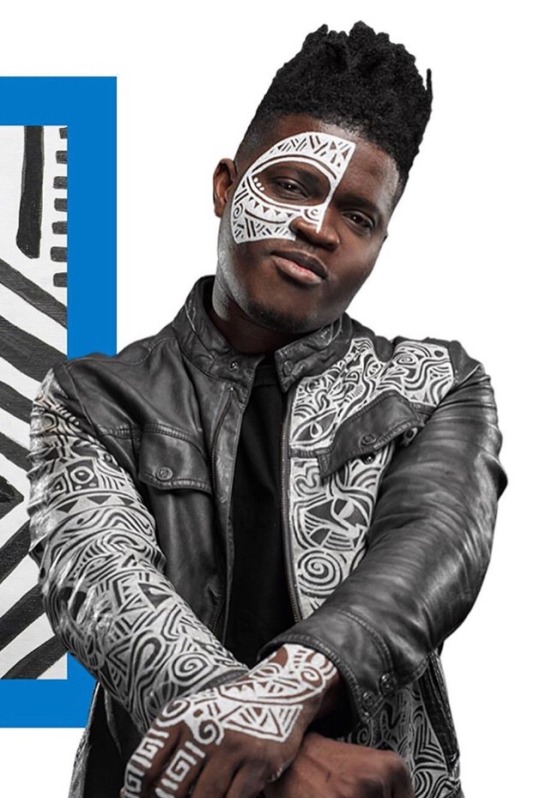
The Sacred Art of the Ori Every artist has a name, and every artist has a story. Laolu Senbanjo's story started in Nigeria, where he was surrounded by the culture and mythology of
0 notes
Video
#shahrukhkhan #shahrukh #srk #shah_rukh_khan #shahrukh_khan #iamsrk #kingkhan #ted2017 #vancouver
2 notes
·
View notes
Video
Inspiration from @laolunyc - At what moment did you realize your life's purpose? Link in bio #TED2017 #inspire #sacredartoftheori - #regrann
0 notes
Photo
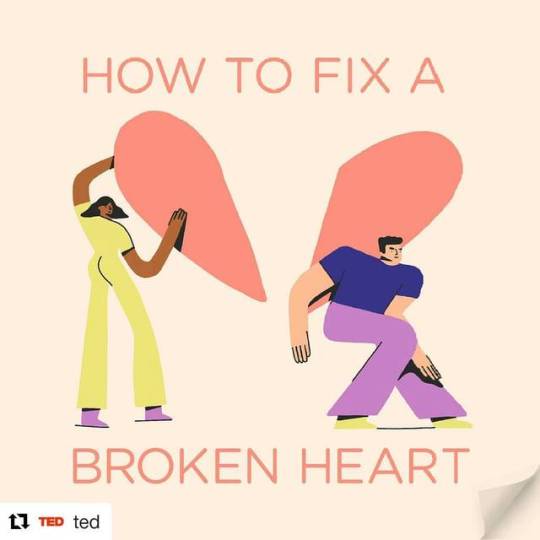
#portaldoaprendizdoingles #Repost @ted (@get_repost) ・・・ Flip through the images for expert advice on healing after a breakup. This post is based on a #TEDTalk by psychologist Guy Winch, given at #TED2017 this week. Illustration by @ameliagiller
0 notes